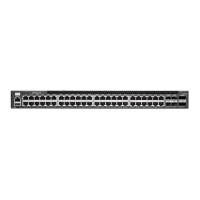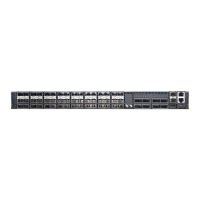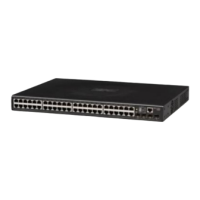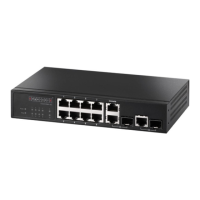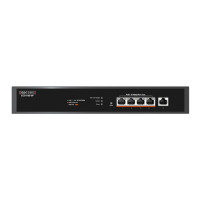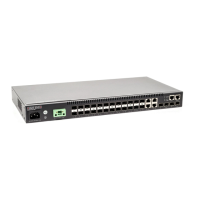Chapter 30
| Multicast Routing Commands
PIM Multicast Routing
– 1068 –
show ipv6 pim
bsr-router
This command displays information about the bootstrap router (BSR).
Command Mode
Privileged Exec
Command Usage
This command displays information about the elected BSR.
Example
This example displays information about the BSR.
Console#show ipv6 pim bsr-router
PIMv2 Bootstrap information
BSR address : 2001:DB8:2222:7272::72/128
Uptime : 00:00:04
BSR Priority : 200
Hash mask length : 20
Expire : 00:02:06
Role : Candidate BSR
State : Elected BSR
Console#
Table 207: show ip pim bsr-router - display description
Field Description
BSR Address
IP address of interface configured as the BSR.
Uptime
The time this BSR has been up and running.
BSR Priority
Priority assigned to this interface for use in the BSR election process.
Hash Mask Length
The number of significant bits used in the multicast group comparison
mask. This mask determines the multicast group for which this router
can be a BSR.
Expire
The time before this entry will be removed.
Role
Candidate BSR or Non-candidate BSR.
State
Operation state of BSR includes:
◆
No information – No information stored for this device.
◆
Accept Any – The router does not know of an active BSR, and will
accept the first bootstrap message it sees as giving the new BSR's
identity and the RP-set.
◆
Accept Preferred – The router knows the identity of the current
BSR, and is using the RP-set provided by that BSR. Only bootstrap
messages from that BSR or from a C-BSR with higher weight than
the current BSR will be accepted.
◆
Candidate BSR – Bidding in election process.
◆
Pending-BSR – The router is a candidate to be the BSR for the RP-
set. Currently, no other router is the preferred BSR, but this router
is not yet the elected BSR.
◆
Elected BSR – elected to serve as BSR

